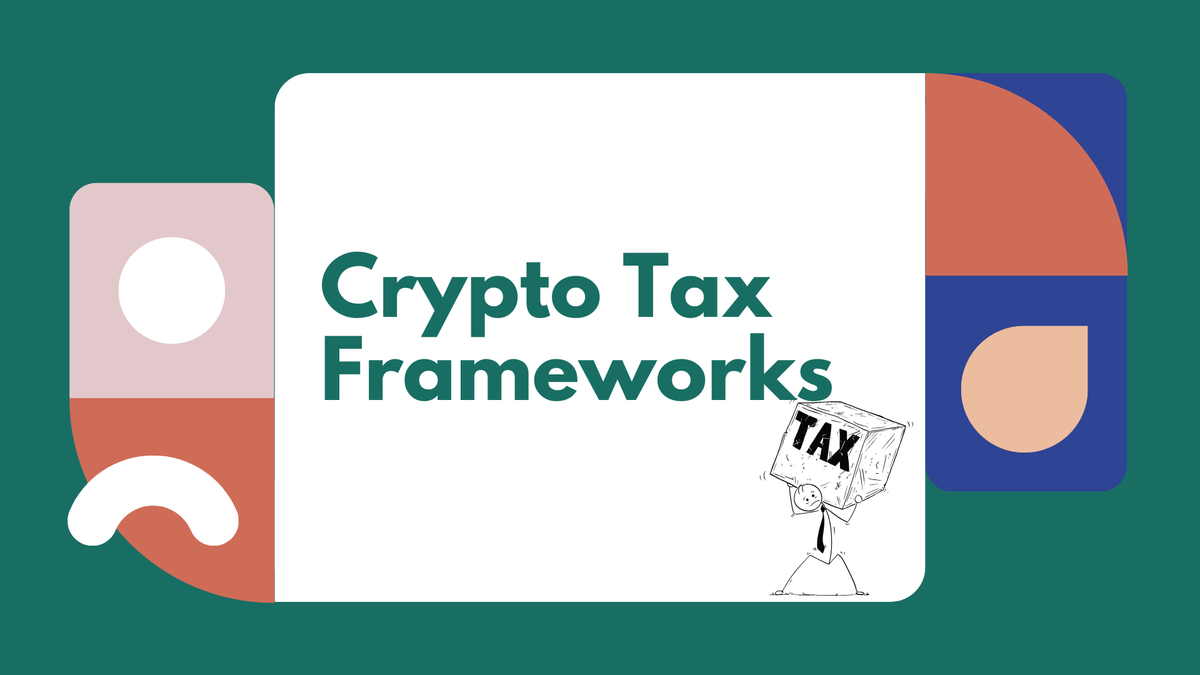Crypto Tax Frameworks: Compliance, Reporting, and Global Standards

Cryptocurrencies have transformed the financial landscape, offering decentralized, borderless, and often pseudonymous transactions. However, their decentralized nature poses significant challenges for tax authorities, particularly in tracking and taxing transactions effectively.
Governments and international organizations have developed comprehensive tax frameworks to ensure compliance, enhance reporting, and establish global standards for crypto taxation. These frameworks address concerns about tax evasion, money laundering, and significant revenue loss, with estimates suggesting the US could generate $28 billion over ten years by closing the crypto reporting gap, and the EU potentially capturing €850 million from Bitcoin taxes in 2020.
The need for such frameworks arises from cryptocurrencies operating outside traditional financial systems, lacking oversight from banks and other institutions. This has led to difficulties in monitoring transactions, prompting the development of systems to bring crypto-assets into the tax net and ensure fair taxation.
Global Standards: The Crypto-Asset Reporting Framework (CARF)
The Organization for Economic Cooperation and Development (OECD) has taken a leading role in establishing global standards through the Crypto-Asset Reporting Framework (CARF), introduced to facilitate the automatic exchange of information on crypto-assets between tax authorities, similar to the Common Reporting Standard (CRS) for traditional financial accounts. CARF was agreed upon by 48 countries on November 10, 2023, with implementation targeted for 2027, though key crypto markets like China, India, Turkey, and African countries are notably absent.
Key Features of CARF:
- Scope: Covers a wide range of crypto-assets, including cryptocurrencies like Bitcoin, stablecoins, certain non-fungible tokens (NFTs), and crypto-derivatives, defined as digital representations of value using cryptographically secured distributed ledgers.
- Reporting Entities: Crypto-asset service providers, such as exchanges, wallets, and payment processors, must report if they have a nexus (e.g., tax residency, business operations) in a signatory country. Nexus criteria include being tax resident, incorporated under jurisdiction laws, managed from, having a regular place of business, or a branch effecting transactions in the jurisdiction.
- Reportable Transactions: Includes crypto-to-fiat exchanges, crypto-to-crypto exchanges, transfers between accounts or addresses, and use of crypto-assets as payment for goods or services exceeding $50,000.
- Data Reported: Includes aggregate investments, transaction details, value at acquisition, gross proceeds from disposals, and transfers to external wallets (units and total value).
- Exclusions: Low-risk assets not used for payment or investment, Central Bank Digital Currencies, and Specified Electronic Money Products (the latter two reportable under amended CRS).
CARF aims to close the tax gap by ensuring tax authorities have visibility into taxpayers' crypto-related activities, building on the success of the CRS and adapting to the rapid growth of the crypto market, which saw its market capitalization fluctuate from $715 billion in January 2021 to nearly $3 trillion before a decline.
Regional Implementations: DAC8 in the European Union
The European Union has adopted its framework through the eighth amendment to the Directive on Administrative Cooperation (DAC8), closely aligned with CARF, to enhance tax transparency for crypto-asset transactions within the EU. DAC8 was adopted on October 17, 2023, published on October 24, 2023, with a transposition deadline of December 31, 2025, and application starting January 1, 2026, with the first reporting year in 2026 and information exchange by September 30, 2027.
Key Aspects of DAC8:
- Purpose: Facilitates automatic exchange of information on crypto-assets between EU member states to fight tax fraud, evasion, and avoidance, addressing the decentralized nature of crypto-assets that complicates tax compliance.
- Reporting Obligations: Reporting Crypto-Asset Service Providers (RCASPs) must collect and report transaction data for EU-resident clients, including transfers, exchanges, and payments. RCASPs include both regulated providers under the Markets in Crypto-Assets Regulation (MiCA) and unregulated operators.
- Scope: Covers decentralized issued assets, stablecoins, e-money tokens, and certain NFTs, building on MiCA for consumer protections and licensing.
- Due Diligence Requirements: RCASPs must identify customers, determine tax jurisdiction, and collect information like name, address, tax ID, and date of birth for individuals, with additional details for entities.
- Impact: Aims to harmonize compliance across the EU, reducing opportunities for hiding assets across member states, and aligns with CARF to ensure international cooperation.
DAC8 is seen as instrumental in complementing MiCA and anti-money laundering regulations, with significant administrative burdens for providers but potential to reduce underreporting and close tax gaps.
US Regulations: Form 1099-DA
In the United States, the Internal Revenue Service (IRS) has introduced Form 1099-DA (Digital Asset Proceeds from Broker Transactions) to increase transparency in crypto transactions, effective for transactions in the 2025 tax year, with forms issued in early 2026. This aligns with global efforts to standardize reporting and addresses the treatment of cryptocurrencies as property under IRS Notice 2014-21, subject to general property tax rules.
Key Features of Form 1099-DA:
- Reporting Requirements: Brokers, including crypto exchanges, wallet providers, and payment processors, must report gross proceeds, transaction dates and types (e.g., buy, sell, exchange), fair market value, and broker identification details.
- Cost Basis Reporting: Delayed until the 2026 tax year, with safe harbor relief for 2025 allowing accounting methods like FIFO, LIFO, or HIFO, though brokers are not required to support these yet.
- Exemptions: Decentralized exchanges (DeFi) and unhosted wallets are exempt until at least 2027, reflecting the challenges of regulating peer-to-peer transactions.
- Real Estate Transactions: From 2025, digital assets used as payment for real estate must be reported on Form 1099-S, including fair market value.
- Preparation Steps: Individuals should track transactions, use crypto tax software, choose an accounting method, and consult professionals. Businesses must upgrade systems, collect tax certifications (e.g., Form W-9, W-8), train staff, and ensure data security.
Form 1099-DA is expected to improve the IRS's ability to assess taxes, penalties, and interest for underreported digital asset income, marking a significant shift for investors and brokers.
Country-Specific Variations
While CARF provides a global standard, tax treatment varies by country, as seen in regions like Canada, the UK, Japan, Australia, Singapore, India, and the EU. For example:
- Canada treats crypto as commodities, requiring registration with FINTRAC.
- The UK applies capital gains tax on trading profits, with specific reporting for KYC and AML.
- India imposes a 30% tax on crypto investments and 1% TDS on trades, with a pending bill to ban private crypto.
These variations highlight the complexity of global coordination, with some countries aligning with CARF and others developing unique approaches.
Challenges and Considerations for Compliance
Implementing these frameworks presents several challenges:
- Administrative Burden: Crypto-asset service providers face significant workloads, such as aligning with DAC8's due diligence requirements or upgrading systems for Form 1099-DA, potentially relying on existing CRS/FATCA processes if compliant.
- Global Coordination: Ensuring compatibility between frameworks requires international cooperation, with CARF providing a foundation but varying adoption rates, especially in non-signatory countries.
- Privacy Concerns: The collection and sharing of transaction data raise privacy issues, particularly for users valuing pseudonymity, necessitating a balance with tax compliance.
- Education and Awareness: Both taxpayers and providers need education, as seen in HMRC's use of CARF data for compliance enforcement, advising unprompted disclosures to reduce penalties.
These challenges underscore the need for ongoing dialogue between regulators, industry stakeholders, and users to ensure effective implementation.
Implications for Crypto Users and Service Providers
For individuals, these frameworks mean increased monitoring, requiring accurate record-keeping and understanding of tax obligations. Crypto service providers must adapt by upgrading systems, training staff, and ensuring compliance, with potential administrative burdens but also opportunities to align with mainstream financial providers.
The future of crypto taxation will likely see continued evolution, with frameworks like CARF and DAC8 shaping a more transparent and regulated market, while addressing privacy and coordination challenges.
Conclusion
Crypto tax frameworks, such as CARF, DAC8, and Form 1099-DA, represent a significant shift towards transparency and compliance, ensuring governments can collect taxes on crypto transactions. These frameworks address the unique challenges of the crypto market, with ongoing efforts needed to balance privacy, administrative burdens, and global coordination. Stakeholders must stay informed and adapt to these evolving regulations for a sustainable and compliant crypto ecosystem.
Key Citations
- Deloitte Cryptocurrency Tax Reporting
- BDO New tax transparency framework for crypto-assets
- Plunkett Cooney Overview of Federal Crypto Tax Reporting Requirements
- Investopedia Cryptocurrency Regulations Around the World
- European Commission DAC8
- OECD International Standards for Automatic Exchange of Information in Tax Matters
- CFO Dive Crypto’s compliance revolution Navigating the new era of digital asset tax reporting
MITOSIS official links:
GLOSSARY
Mitosis University
WEBSITE
X (Formerly Twitter)
DISCORD
DOCS


Comments ()